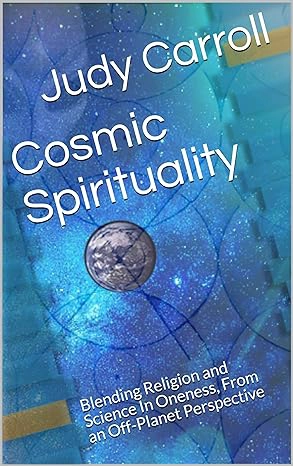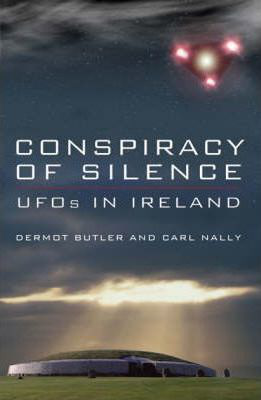Conditioned for Contact: Are Decades of Alien Films Preparing Us for Disclosure?
Alien Life & UFO/UAPs
Today (6 hours ago)
6 minute read.
For decades, films and television programmes have explored humanity’s potential first contact with extraterrestrial life. From Close Encounters of the Third Kind (1977) to Independence Day (1996), the global audience has been repeatedly exposed to narratives involving unidentified flying objects (UFOs) and alien civilisations - often arriving from the depths of space towards Earth.
Now, some researchers and commentators argue that this media trend may amount to a form of slow cultural conditioning, preparing the public - consciously or otherwise - for the possibility of actual extraterrestrial contact.
The Central Thesis: Slow Disclosure via Storytelling
Proponents of the "conditioning hypothesis" suggest that the near-continuous stream of alien-themed content over the last 50 years has gradually acclimatised the public to once, taboo ideas: intelligent life beyond Earth, government cover-ups, and the possibility of a slowly approaching craft from deep space.
One notable example is Close Encounters of the Third Kind, directed by Steven Spielberg. Persistent rumours within the UFO research community allege that parts of the film were inspired by accounts shared with Spielberg from actual reported events. While no formal documentation of this claim has surfaced, the director has previously stated in interviews that he was inspired by childhood events watching meteors.
The film’s central narrative, humans receiving signals from a distant object and eventually making peaceful contact, mirrors scenarios that are now seriously contemplated by scientists, ex-intelligence officials, and popular UFO commentators.
“You Will Be Told a Craft Is Coming” – Corbell’s Claim
In January 2025, filmmaker and UFO researcher Jeremy Corbell reignited the debate when he stated:
Corbell, who gained notoriety for releasing purportedly leaked military footage of unidentified aerial phenomena, claims this narrative has its origins in classified documentation from the 1970s. He further warns that the year 2027 has been referenced in some intelligence circles, potentially as a pivotal point for public messaging regarding UFOs.
The timing, he suggests, is not coincidental, but instead part of a long-prepared sequence involving gradual exposure to such ideas through both fiction and official leaks.
Coulthart’s Echo: “Something is Coming”
Adding weight to Corbell’s assertions, investigative journalist Ross Coulthart - best known for his interviews with intelligence insiders and whistleblowers - has recently echoed similar warnings. In several public appearances and interviews, Coulthart has alluded to the suggestion that something is going to be disclosed or is going to happen by 2027... and that there are people in government who seem genuinely concerned about this.
While Coulthart has not provided physical evidence to support this timeline, he maintains that multiple well-placed sources within western intelligence agencies have referenced a deadline or event horizon by that year. His statements have drawn attention for aligning closely with Corbell’s remarks, despite the two operating independently.
Coulthart also emphasises that the secrecy surrounding alleged non-human technology retrieval programmes and recovered craft is becoming increasingly difficult to maintain. Some in the field interpret this convergence of messaging as further indication that a broader disclosure campaign - whether organic or orchestrated - may already be underway.
Historical Precedents in Film and Television
The pattern extends far beyond Spielberg. Films like The Day the Earth Stood Still (1951, remade in 2008), Stargate (1994), War of the Worlds (1953, 2005), and Arrival (2016) all depict advanced beings arriving - sometimes peacefully, sometimes with menace - and humanity struggling to respond.
In Independence Day, a massive alien spacecraft enters Earth’s orbit and dispatches smaller craft to major cities. The ship’s size is estimated in the film to be over 800 kilometres in diameter, and its slow descent builds tension across global capitals. Its approach speed, although fictional, is typically portrayed in the range of 1,000 to 5,000 kilometres per hour.
Even more recent entries, such as Nope (2022) and The Vast of Night (2019), maintain the tradition of contact or abduction scenarios rooted in unexplained aerial events.
Television series such as The X-Files, Ancient Aliens, and Project Blue Book have also played roles in blending speculative fiction with accounts drawn from reported sightings and declassified documents.
Cultural Psychology and Acceptance Theory
Some sociologists and psychologists posit that repeated exposure to alien-related narratives reduces psychological shock - a phenomenon known as “normalisation through repetition”. This concept is not limited to fiction. Government transparency movements in the U.S., United Kingdom, and France have all seen gradual declassification of UFO reports over the last two decades.
In the UK, the Ministry of Defence released thousands of pages of UFO files between 2008 and 2013. Many reports described objects seen by pilots, radar operators, and civilians alike. While no formal confirmation of extraterrestrial origin was given, the act of disclosure itself marked a shift from outright denial to cautious openness.
Disclosure or Disinformation?
Corbell’s warning has been met with scepticism. Critics accuse him of promoting theatrical speculation. Others argue that suggesting a “false flag alien event” is itself a form of misinformation - distracting from genuine scientific inquiry.
However, there is agreement across both believers and sceptics that public interest in extraterrestrial life has been sustained in part by popular media. Whether this interest is a cause or consequence of official narratives remains a matter of debate.
Looking to 2027
As the year 2027 approaches, Corbell and others assert that the public may be presented with a scenario involving a slowly incoming object - real or fabricated. In the absence of independently verified evidence, such claims remain speculative.
Nonetheless, if a large object were ever to approach Earth at a velocity of 2,000 kilometres per hour from beyond the Moon’s orbit - roughly 384,400 kilometres away - it would be detectable weeks in advance by civilian and military observatories.
Until then, the role of films, series, and documentaries in shaping public expectations about the unknown remains a topic of legitimate cultural inquiry.
The Unanswered Question
While no official announcement has confirmed the approach of any craft or event tied to 2027, the convergence of speculation from filmmakers, journalists, and former intelligence officials has fuelled public curiosity and concern.
If an object were to reveal itself, possibilities range from peaceful contact or technological exchange to geopolitical chaos or orchestrated deception. Others suggest a slow, atmospheric presence - an arrival that offers no answers, only observation.
In the absence of clear information, humanity remains caught between anticipation and uncertainty. And as the timeline shortens, one question looms larger than all others:
What exactly is coming - and who will control the story when it arrives?
Now, some researchers and commentators argue that this media trend may amount to a form of slow cultural conditioning, preparing the public - consciously or otherwise - for the possibility of actual extraterrestrial contact.
The Central Thesis: Slow Disclosure via Storytelling
Proponents of the "conditioning hypothesis" suggest that the near-continuous stream of alien-themed content over the last 50 years has gradually acclimatised the public to once, taboo ideas: intelligent life beyond Earth, government cover-ups, and the possibility of a slowly approaching craft from deep space.
One notable example is Close Encounters of the Third Kind, directed by Steven Spielberg. Persistent rumours within the UFO research community allege that parts of the film were inspired by accounts shared with Spielberg from actual reported events. While no formal documentation of this claim has surfaced, the director has previously stated in interviews that he was inspired by childhood events watching meteors.
The film’s central narrative, humans receiving signals from a distant object and eventually making peaceful contact, mirrors scenarios that are now seriously contemplated by scientists, ex-intelligence officials, and popular UFO commentators.
“You Will Be Told a Craft Is Coming” – Corbell’s Claim
In January 2025, filmmaker and UFO researcher Jeremy Corbell reignited the debate when he stated:
“You will be told that there is a craft slowly approaching Earth. That is a lie. It’s a lie. It’s part of a psychological operation that is based on a real event, but they are going to manipulate the narrative.”
Corbell, who gained notoriety for releasing purportedly leaked military footage of unidentified aerial phenomena, claims this narrative has its origins in classified documentation from the 1970s. He further warns that the year 2027 has been referenced in some intelligence circles, potentially as a pivotal point for public messaging regarding UFOs.
The timing, he suggests, is not coincidental, but instead part of a long-prepared sequence involving gradual exposure to such ideas through both fiction and official leaks.
Coulthart’s Echo: “Something is Coming”
Adding weight to Corbell’s assertions, investigative journalist Ross Coulthart - best known for his interviews with intelligence insiders and whistleblowers - has recently echoed similar warnings. In several public appearances and interviews, Coulthart has alluded to the suggestion that something is going to be disclosed or is going to happen by 2027... and that there are people in government who seem genuinely concerned about this.
While Coulthart has not provided physical evidence to support this timeline, he maintains that multiple well-placed sources within western intelligence agencies have referenced a deadline or event horizon by that year. His statements have drawn attention for aligning closely with Corbell’s remarks, despite the two operating independently.
Coulthart also emphasises that the secrecy surrounding alleged non-human technology retrieval programmes and recovered craft is becoming increasingly difficult to maintain. Some in the field interpret this convergence of messaging as further indication that a broader disclosure campaign - whether organic or orchestrated - may already be underway.
Historical Precedents in Film and Television
The pattern extends far beyond Spielberg. Films like The Day the Earth Stood Still (1951, remade in 2008), Stargate (1994), War of the Worlds (1953, 2005), and Arrival (2016) all depict advanced beings arriving - sometimes peacefully, sometimes with menace - and humanity struggling to respond.
In Independence Day, a massive alien spacecraft enters Earth’s orbit and dispatches smaller craft to major cities. The ship’s size is estimated in the film to be over 800 kilometres in diameter, and its slow descent builds tension across global capitals. Its approach speed, although fictional, is typically portrayed in the range of 1,000 to 5,000 kilometres per hour.
Even more recent entries, such as Nope (2022) and The Vast of Night (2019), maintain the tradition of contact or abduction scenarios rooted in unexplained aerial events.
Television series such as The X-Files, Ancient Aliens, and Project Blue Book have also played roles in blending speculative fiction with accounts drawn from reported sightings and declassified documents.
Cultural Psychology and Acceptance Theory
Some sociologists and psychologists posit that repeated exposure to alien-related narratives reduces psychological shock - a phenomenon known as “normalisation through repetition”. This concept is not limited to fiction. Government transparency movements in the U.S., United Kingdom, and France have all seen gradual declassification of UFO reports over the last two decades.
In the UK, the Ministry of Defence released thousands of pages of UFO files between 2008 and 2013. Many reports described objects seen by pilots, radar operators, and civilians alike. While no formal confirmation of extraterrestrial origin was given, the act of disclosure itself marked a shift from outright denial to cautious openness.
Disclosure or Disinformation?
Corbell’s warning has been met with scepticism. Critics accuse him of promoting theatrical speculation. Others argue that suggesting a “false flag alien event” is itself a form of misinformation - distracting from genuine scientific inquiry.
However, there is agreement across both believers and sceptics that public interest in extraterrestrial life has been sustained in part by popular media. Whether this interest is a cause or consequence of official narratives remains a matter of debate.
Looking to 2027
As the year 2027 approaches, Corbell and others assert that the public may be presented with a scenario involving a slowly incoming object - real or fabricated. In the absence of independently verified evidence, such claims remain speculative.
Nonetheless, if a large object were ever to approach Earth at a velocity of 2,000 kilometres per hour from beyond the Moon’s orbit - roughly 384,400 kilometres away - it would be detectable weeks in advance by civilian and military observatories.
Until then, the role of films, series, and documentaries in shaping public expectations about the unknown remains a topic of legitimate cultural inquiry.
The Unanswered Question
While no official announcement has confirmed the approach of any craft or event tied to 2027, the convergence of speculation from filmmakers, journalists, and former intelligence officials has fuelled public curiosity and concern.
If an object were to reveal itself, possibilities range from peaceful contact or technological exchange to geopolitical chaos or orchestrated deception. Others suggest a slow, atmospheric presence - an arrival that offers no answers, only observation.
In the absence of clear information, humanity remains caught between anticipation and uncertainty. And as the timeline shortens, one question looms larger than all others:
What exactly is coming - and who will control the story when it arrives?



